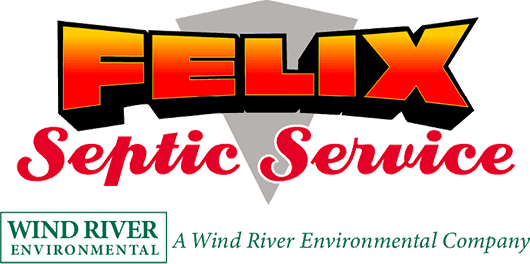
As a homeowner, you may be wondering how your septic system actually works and what goes on beneath the surface. Knowing how your septic works and how to care for it can save you time, money, and frustration. Here are the basics you need to know:
How it Works
The first thing to know about your septic is that all water runs from your house into one main drainage pipe and into your septic tank. This means that if your system is working properly, all the waste from your house should end up in your septic tank. This wastewater includes not just that from toilets, but also all water that flows out of your sinks, tubs, showers, and washing machine. Backups and clogs can stop this flow from happening so be sure not to flush items such as paper towels, grease, personal hygiene products, or wet wipes. The only items that should be flushed are human waste and toilet paper. This also means that the buildup of fabric softener over time and even human hair can accumulate in the drain and also cause clogs. Paint, grout, mortar, cement, and concrete also can not be broken down by the bacteria in your septic meaning it can cause sludge to accumulate. If you’re working with these substances around your home, dispose of them in the trash or with an outdoor hose, and never pour them down a sink. For more information on how to avoid backups and other issues, check out our blog on safe and unsafe products for your septic.
Next, the septic tank must hold the wastewater long enough to let solids settle and form a sludge. While this is happening, any oil and grease will float to the top and create scum. Compartments within the tank will prevent sludge and scum from mixing together or leaking into the drain field. This is just one part of the filtering process. Your septic tank should be buried in a watertight container and held in place and compacted by uniform layers of soil covered by grass. This ensures that the tank does not shift or leak contaminated water.
The liquid wastewater then exits the tank into the drain field. Therefore, it is important that you don’t oversaturate the drain field as the liquid wastewater is already draining there. If your drain field does become over-saturated, wastewater will not be soaked up but instead will rise to the surface and create a mud puddle along with a very unpleasant odor. Check out the 4 common signs to look out for that could indicate drain field failure.
The wastewater then percolates into the soil where harmful attributes such as bacteria, coliform, and viruses are removed. Coliform is a group of bacteria commonly found in the intestines of warm-blooded animals and therefore human waste. This is a group of bacteria that you do not want to make it through the filtering and treating process. Ultimately, filtered water will be discharged as groundwater.
Keep in mind that not every system is built exactly the same and some have varying components depending on the needs of your home. It’s important for you as the homeowner to understand the features of your specific septic so that a technician can ensure proper maintenance and best locate and resolve issues when they arise. While all septics have two main components – the septic tank and the leach field – some may also have a distribution box that is located in the leach field and helps dispense the waste properly. Some properties may also require a lift station which is a pump that moves wastewater to higher elevations. This is common on properties that are located in a very flat or low-elevation area.
How to Care for Your Septic
A big part of a septic system working properly is the owner’s treatment and maintenance of its system. Proper care and maintenance will make the difference between a problem-prone and easy-to-manage septic system. Make sure you get your tank pumped every 2-3 years and minimize your use of garbage disposals. Also, be sure to know where all of the components of your septic are so that if problems do arise, your technician knows exactly where to go and maintenance can be performed as quickly as it is needed. If you understand your septic system and treat it right, your system can operate for up to 30 years or more – making it an important investment in the overall care of your home.
Understanding how your septic works and how to take care of it will work in your favor. If you think it’s time for some routine maintenance or just have some follow-up questions about how your septic works, reach out today. We have professionals ready to help you 24 hours a day, 7 days a week.

